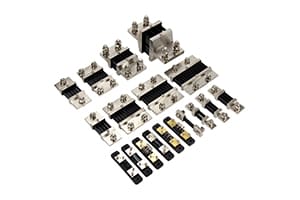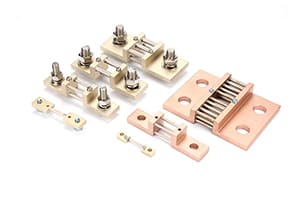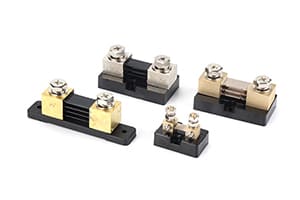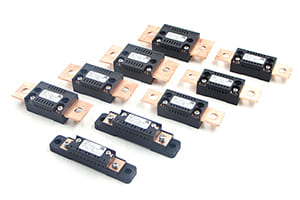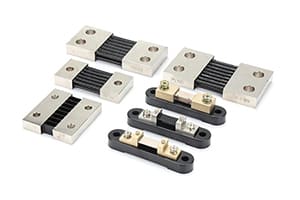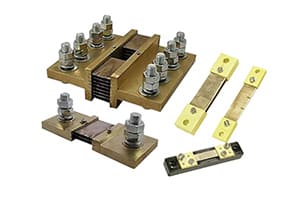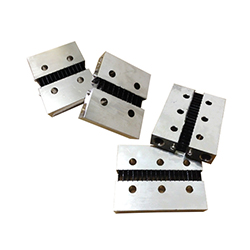
In my decades of manufacturing DC shunts, I've seen temperature variations cause significant measurement errors. Many users don't realize how critical temperature stability is for accurate current measurement.
Temperature effects can significantly impact DC shunt accuracy, potentially causing measurement errors of up to 0.5% per 10°C change. Understanding and managing these effects is crucial for maintaining measurement precision.
Through my extensive experience working with various industries, from electric vehicles to renewable energy systems, I've developed deep insights into how temperature affects shunt performance. The relationship between temperature and measurement accuracy is complex, involving multiple factors that must be carefully managed. Let me share my expertise on why temperature stability is crucial and how to maintain accurate measurements across different operating conditions.
How Does Temperature Affect DC Shunt Resistance?
Every time I consult with clients about precision measurements, they're surprised to learn how significantly temperature can affect shunt resistance. This variation can lead to substantial measurement errors.
Temperature changes directly impact DC shunt resistance, causing it to vary by up to 50 parts per million per degree Celsius. This variation can significantly affect measurement accuracy in high-precision applications.

The relationship between temperature and shunt resistance is a critical consideration in design and application. Through years of research and development, we've identified how different alloy compositions respond to temperature changes. Our testing has shown that even small temperature variations can cause measurable changes in resistance values.
We've developed specialized alloy combinations that minimize temperature-induced resistance changes. These materials undergo extensive testing across wide temperature ranges to ensure stability. Our latest designs incorporate advanced metallurgical techniques that reduce temperature coefficients to as low as 15 ppm/°C, significantly improving measurement accuracy under varying conditions.
Why Do DC Shunts Need Temperature Compensation?
Throughout my career, I've encountered numerous cases where uncompensated temperature effects led to significant measurement errors. These errors can have serious consequences in critical applications.
Temperature compensation in DC shunts is essential because it maintains measurement accuracy across varying operating conditions. Without it, temperature-induced errors can make measurements unreliable for precision applications.

Temperature compensation is a complex challenge that requires careful design consideration. Our experience has led to the development of innovative compensation techniques that maintain accuracy across wide temperature ranges. We use advanced materials and design approaches to minimize temperature-induced errors.
Our latest compensation methods include integrated temperature sensors and sophisticated correction algorithms. These systems continuously monitor ambient and operating temperatures, adjusting measurements in real-time to maintain accuracy. The compensation circuits we've developed can reduce temperature-induced errors by up to 90% compared to uncompensated shunts.
How Do DC Shunts Maintain Accuracy Across Temperatures?
In my work with precision measurement applications, maintaining accuracy across temperature ranges is often the biggest challenge. Each application requires a carefully tailored approach to thermal management.
DC shunts maintain accuracy through specialized alloy selection, advanced thermal design, and integrated compensation systems. These features work together to ensure stable measurements across operating temperature ranges.

Maintaining accuracy across temperatures requires a comprehensive approach to thermal management. Our designs incorporate multiple strategies to ensure stable performance. We use advanced thermal modeling to understand heat distribution and optimize shunt geometry for uniform temperature distribution.
The latest shunts we produce feature innovative mounting designs that minimize thermal stress and improve heat dissipation. We've also developed specialized coating technologies that enhance thermal stability while protecting against environmental factors. These improvements allow our shunts to maintain their specified accuracy even in challenging thermal environments.
Conclusion
Temperature effects on DC shunt accuracy are complex but manageable with proper design and compensation. Through careful material selection, advanced thermal management, and sophisticated compensation techniques, modern DC shunts can maintain high accuracy across wide temperature ranges. My experience has shown that understanding and addressing temperature effects is crucial for achieving reliable measurements in any application. As measurement requirements become more demanding, the importance of temperature stability in DC shunts will only increase. Choosing shunts with proper temperature compensation and stability features is essential for achieving accurate and reliable current measurements.



